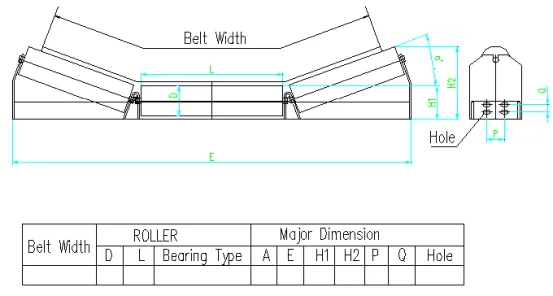 Afrikaans
Afrikaans  Albanian
Albanian  Amharic
Amharic  Arabic
Arabic  Armenian
Armenian  Azerbaijani
Azerbaijani  Basque
Basque  Belarusian
Belarusian  Bengali
Bengali  Bosnian
Bosnian  Bulgarian
Bulgarian  Catalan
Catalan  Cebuano
Cebuano  Corsican
Corsican  Croatian
Croatian  Czech
Czech  Danish
Danish  Dutch
Dutch  English
English  Esperanto
Esperanto  Estonian
Estonian  Finnish
Finnish  French
French  Frisian
Frisian  Galician
Galician  Georgian
Georgian  German
German  Greek
Greek  Gujarati
Gujarati  Haitian Creole
Haitian Creole  hausa
hausa  hawaiian
hawaiian  Hebrew
Hebrew  Hindi
Hindi  Miao
Miao  Hungarian
Hungarian  Icelandic
Icelandic  igbo
igbo  Indonesian
Indonesian  irish
irish  Italian
Italian  Japanese
Japanese  Javanese
Javanese  Kannada
Kannada  kazakh
kazakh  Khmer
Khmer  Rwandese
Rwandese  Korean
Korean  Kurdish
Kurdish  Kyrgyz
Kyrgyz  Lao
Lao  Latin
Latin  Latvian
Latvian  Lithuanian
Lithuanian  Luxembourgish
Luxembourgish  Macedonian
Macedonian  Malgashi
Malgashi  Malay
Malay  Malayalam
Malayalam  Maltese
Maltese  Maori
Maori  Marathi
Marathi  Mongolian
Mongolian  Myanmar
Myanmar  Nepali
Nepali  Norwegian
Norwegian  Norwegian
Norwegian  Occitan
Occitan  Pashto
Pashto  Persian
Persian  Polish
Polish  Portuguese
Portuguese  Punjabi
Punjabi  Romanian
Romanian  Russian
Russian  Samoan
Samoan  Scottish Gaelic
Scottish Gaelic  Serbian
Serbian  Sesotho
Sesotho  Shona
Shona  Sindhi
Sindhi  Sinhala
Sinhala  Slovak
Slovak  Slovenian
Slovenian  Somali
Somali  Spanish
Spanish  Sundanese
Sundanese  Swahili
Swahili  Swedish
Swedish  Tagalog
Tagalog  Tajik
Tajik  Tamil
Tamil  Tatar
Tatar  Telugu
Telugu  Thai
Thai  Turkish
Turkish  Turkmen
Turkmen  Ukrainian
Ukrainian  Urdu
Urdu  Uighur
Uighur  Uzbek
Uzbek  Vietnamese
Vietnamese  Welsh
Welsh  Bantu
Bantu  Yiddish
Yiddish  Yoruba
Yoruba  Zulu
Zulu Design and Functionality of Drive Pulley Shaft in Mechanical Systems and Applications
Understanding the Drive Pulley Shaft An Essential Component in Mechanical Systems
In the machinery and automotive industries, the drive pulley shaft plays a crucial role in the efficient functioning of various mechanical systems. This essential component serves as a connector between the engine and the various drive belts and pulleys, facilitating the transmission of power and motion throughout different parts of a machine or vehicle.
What is a Drive Pulley Shaft?
A drive pulley shaft is a cylindrical metal rod that connects the drive pulley with the engine or motor. It is designed to withstand torque and rotational forces while facilitating the transfer of energy generated by the engine to the pulleys connected to it. These shafts are made from high-strength materials such as steel or aluminum, which allow them to resist wear and corrosion, ensuring longevity and durability in demanding operational environments.
The Functionality
The primary function of a drive pulley shaft is to transmit power. When the engine runs, it generates rotational motion that is transferred to the drive pulley via the shaft. The rotation of the drive pulley subsequently drives the connected components, such as other pulleys and belts, enabling the movement of various machine parts. This is particularly evident in systems like automotive engines, where the drive pulley shaft plays a vital role in driving the alternator, water pump, power steering pump, and air conditioning compressor.
Design Considerations
drive pulley shaft

When designing a drive pulley shaft, several factors must be taken into account to ensure optimal performance and durability. These include the shaft’s diameter, material strength, and weight. The diameter of the shaft must be sufficient to handle the expected torque without bending or breaking. Additionally, the shaft must be balanced to reduce vibrations that could lead to premature wear and failure of connected components.
Moreover, engineers often incorporate features such as keyways for secure attachment to pulleys and splines for better torque transmission. These design elements enhance the efficiency of the power transfer and minimize the possibility of slippage between the shaft and the pulley.
Maintenance and Troubleshooting
Regular maintenance of the drive pulley shaft is essential to prevent mechanical failures. Checking for signs of wear, such as scoring or bending, can help identify issues before they escalate. Proper lubrication of the shaft bearings and periodic inspections are crucial in extending the lifespan of the drive pulley system.
Common issues associated with drive pulley shafts include misalignment, excessive vibrations, and noise, which can indicate problems with the bearings or pulleys. Addressing these issues promptly can prevent more significant damage and ensure optimal performance of the entire mechanical system.
Conclusion
The drive pulley shaft is more than just a simple rod; it is a vital component that facilitates the smooth transmission of power within various mechanical systems. Understanding its functionality, material considerations, and maintenance requirements is essential for anyone involved in machinery design, automotive engineering, or maintenance services. By ensuring that the drive pulley shaft is designed, installed, and maintained correctly, one can significantly enhance the efficiency and reliability of mechanical systems, ultimately leading to better performance and longevity of the machines they serve.
-
Revolutionizing Conveyor Reliability with Advanced Rubber Lagging PulleysNewsJul.22,2025
-
Powering Precision and Durability with Expert Manufacturers of Conveyor ComponentsNewsJul.22,2025
-
Optimizing Conveyor Systems with Advanced Conveyor AccessoriesNewsJul.22,2025
-
Maximize Conveyor Efficiency with Quality Conveyor Idler PulleysNewsJul.22,2025
-
Future-Proof Your Conveyor System with High-Performance Polyurethane RollerNewsJul.22,2025
-
Driving Efficiency Forward with Quality Idlers and RollersNewsJul.22,2025





























